Introduction to Brussels Sprouts Cultivation
Brussels sprouts (Brassica oleracea var. gemmifera) are a vegetable from the cruciferous family, recognized for their small, spherical buds that grow along the plant’s stem. This crop adapts well to cool climates and is appreciated for its high content of vitamins and minerals. This article provides a comprehensive guide on Brussels sprouts cultivation management, from soil preparation to harvest and post-harvest handling, aiming to maximize production and product quality.
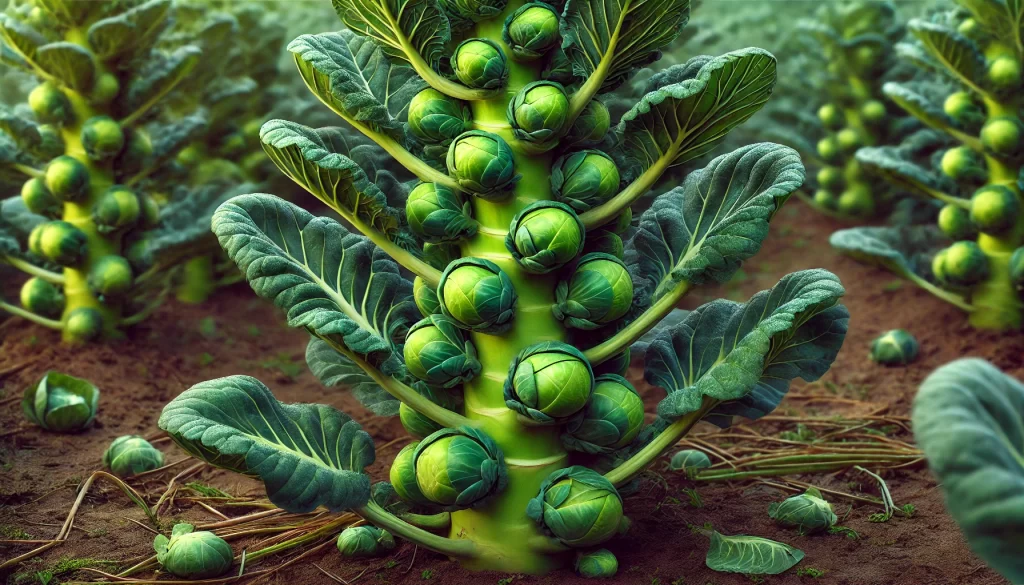
Land Selection and Soil Preparation
Ideal Climatic Conditions
Brussels sprouts thrive in cool climates, with optimal temperatures ranging between 15°C and 20°C. This crop is ideal for temperate and cool climates, where warm temperatures can reduce the quality of the buds. Brussels sprouts can tolerate light frosts, which can even improve the flavor of the buds.
Soil Selection
The cultivation of Brussels sprouts requires well-drained soils, rich in organic matter, and with good water retention capacity. Sandy loam or loamy soils with a pH of 6.0 to 7.5 are the most suitable. It is crucial to avoid compacted or poorly drained soils, as they can cause root rot issues.
Soil Preparation
- Deep Tillage: Perform deep tillage to improve soil structure and facilitate root system development.
- Organic Matter Incorporation: Add compost or well-decomposed manure to improve soil fertility and water retention capacity.
- pH Correction: If the soil pH is outside the optimal range, amendments such as lime to raise it or sulfur to lower it can be applied.
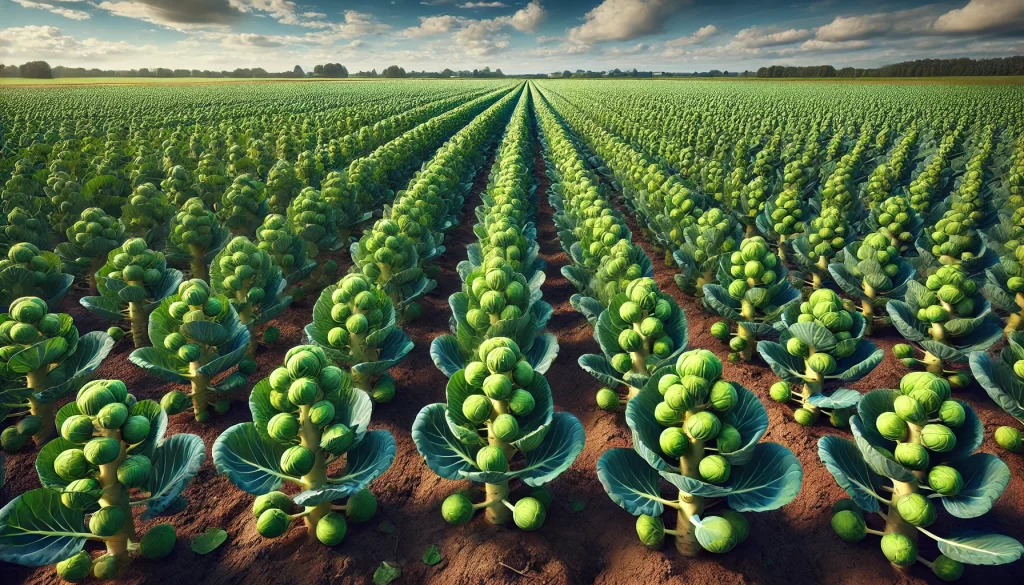
Brussels Sprouts Sowing and Planting
Sowing Methods
Brussels sprouts can be sown directly in the field or by transplanting seedlings produced in a nursery. Direct sowing is less common due to the need for more precise control over germination and initial growth conditions.
Seed Preparation
- Seed Selection: Use certified, high-quality seeds to ensure good germination and plant development.
- Seed Treatment: If necessary, treat seeds with fungicides to prevent diseases during germination.
Direct Sowing
- Sowing Depth: Seeds should be sown at a depth of 1 to 1.5 cm, with a spacing of 45 to 60 cm between plants and 60 to 90 cm between rows.
- Sowing Conditions: Sowing should be done when soil temperatures are cool and consistent, favoring uniform germination.
Seedling Transplanting
- Seedling Production: Seeds are sown in germination trays under controlled conditions. The seedlings are ready for transplanting to the field when they are between 10 and 15 cm tall.
- Field Transplanting: Transplant during the cooler hours of the day and water immediately after to reduce water stress.

Irrigation and Water Management
Brussels Sprouts Water Requirements
Irrigation is crucial for the development of Brussels sprouts, especially during the bud formation phase. Water requirements vary according to the growth stage:
- Establishment: Moderate irrigation to ensure uniform germination and the establishment of vigorous seedlings.
- Vegetative Growth: Maintain regular irrigation to promote healthy plant growth and bud formation.
- Bud Development: Provide adequate irrigation during this critical stage to ensure firm, high-quality buds.
Irrigation Systems
- Drip Irrigation: This is the most efficient system for Brussels sprouts cultivation, as it provides water directly to the root zone, minimizing evaporation losses.
- Sprinkler Irrigation: It may be suitable for large areas, but it should be managed carefully to avoid excessive wetting of leaves, which could promote the onset of foliar diseases.
Brussels Sprouts Fertilization
Nutritional Requirements
Brussels sprouts are nutrient-demanding, especially in nitrogen, phosphorus, and potassium. A balanced fertilization plan is essential to ensure vigorous growth and high production of quality buds.
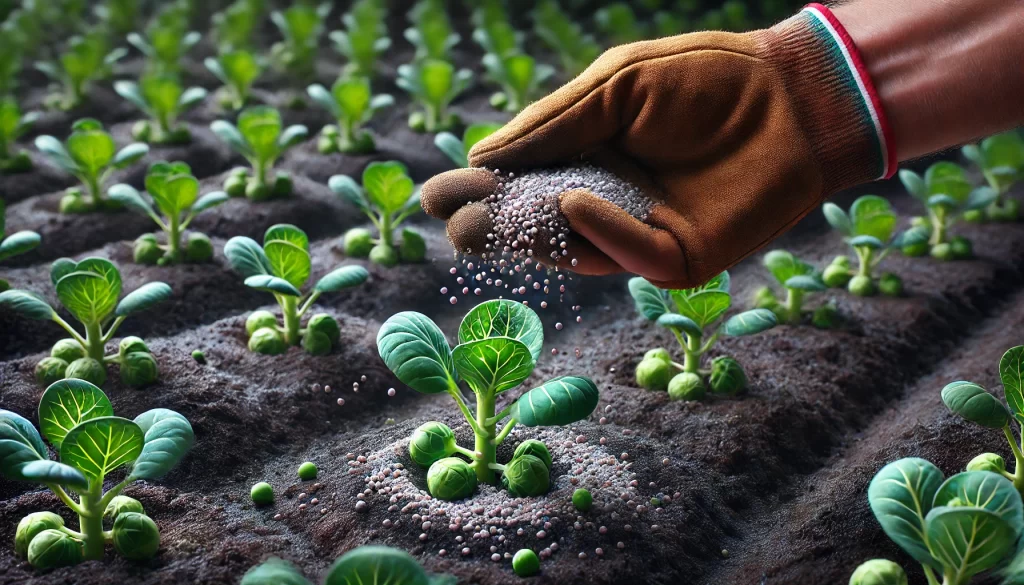
- Nitrogen (N): Promotes vegetative growth and leaf formation.
- Phosphorus (P): Essential for root development and bud formation.
- Potassium (K): Improves bud quality, disease resistance, and storage capacity.
Fertilization Plan
- Base Fertilization: Incorporate an NPK mix before sowing or transplanting to prepare the soil.
- Top-Dressing Fertilization: Apply fertilizers at various stages of the crop cycle, adjusting doses based on soil analysis and plant development.
- Foliar Fertilization: Use foliar applications of micronutrients to correct specific deficiencies and improve crop yield.
Pest and Disease Management
Common Pests
Pest management is essential to maintain the health of Brussels sprouts plants and ensure the production of high-quality buds. The most common pests include:
- Aphids: Affect young buds and can transmit viral diseases.
- Cabbage Worms: Feed on leaves and buds, causing significant damage.
Control Strategies
- Regular Monitoring: Regularly inspect plants to detect pests in a timely manner.
- Biological Control: Introduce natural predators such as ladybugs and parasitic wasps.
- Insecticide Application: Use specific products following technical recommendations to minimize environmental impact and avoid resistance.
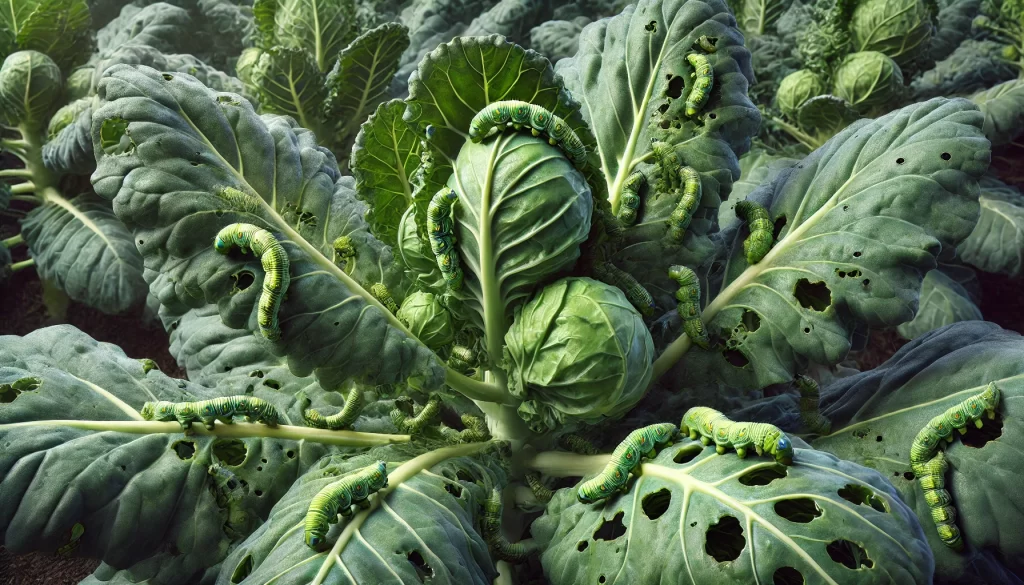
Common Diseases
Diseases can significantly affect the productivity of Brussels sprouts. The most common ones include:
- Downy Mildew (Peronospora parasitica): A fungus that affects leaves, causing spots and discoloration.
- Alternaria (Alternaria brassicae): Causes dark spots on leaves and buds, reducing quality and yield.
Control Strategies
- Sanitary Management: Remove parts affected by diseases to reduce spread.
- Fungicide Use: Apply preventive and curative fungicides under conditions favorable for disease development.
- Crop Rotation: Avoid planting Brussels sprouts in the same area for several consecutive years to reduce disease pressure.
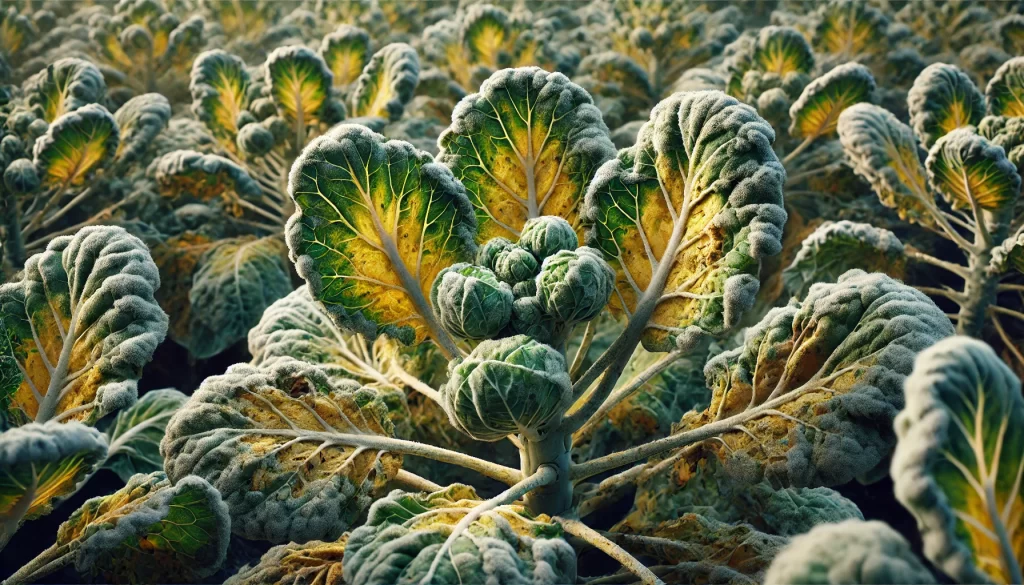
Harvest and Post-Harvest Management
Maturity Indicators
Brussels sprouts are harvested when the buds have reached their optimal size, which can be determined by:
- Bud Size: The buds should be compact, firm, and of uniform size.
- Color: The color should be bright green, without signs of yellowing or discoloration.
Harvesting Techniques
Harvesting is done manually by cutting the buds as they reach the desired size. It is important to handle the buds carefully to avoid damage that could reduce their shelf life.
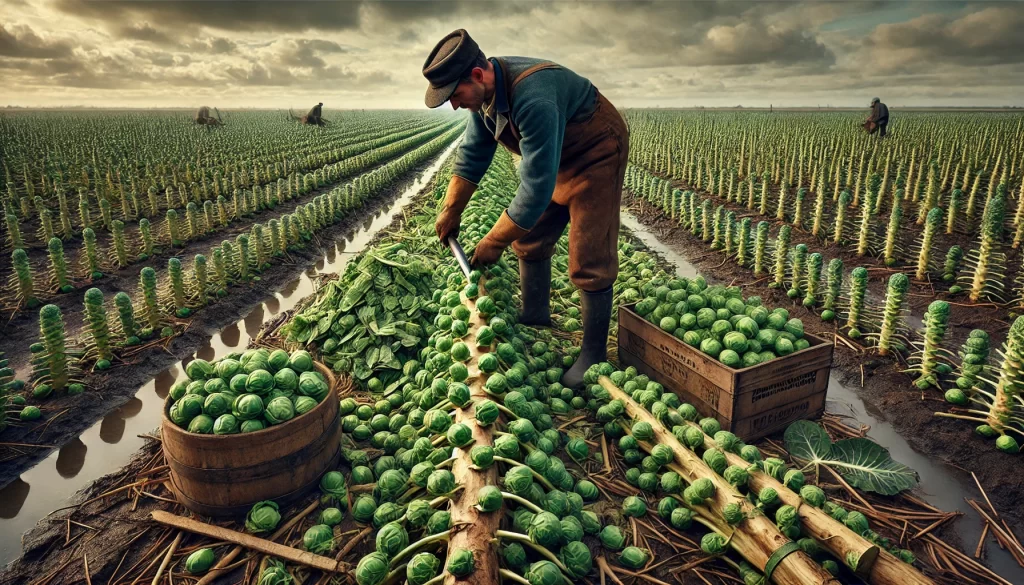
Post-Harvest Management
Post-harvest management is crucial to maintaining the freshness and quality of Brussels sprouts until they reach the final consumer. Recommended practices include:
- Washing and Sorting: Remove impurities and sort the buds according to size, color, and quality.
- Storage: Keep the buds in a cool place, preferably at a temperature of 0-2°C, to prolong their shelf life.
- Transportation: Transport the buds in ventilated boxes to avoid physical damage and preserve their quality during transport to the market.
 AgronoBlog – Agriculture Blog
AgronoBlog – Agriculture Blog